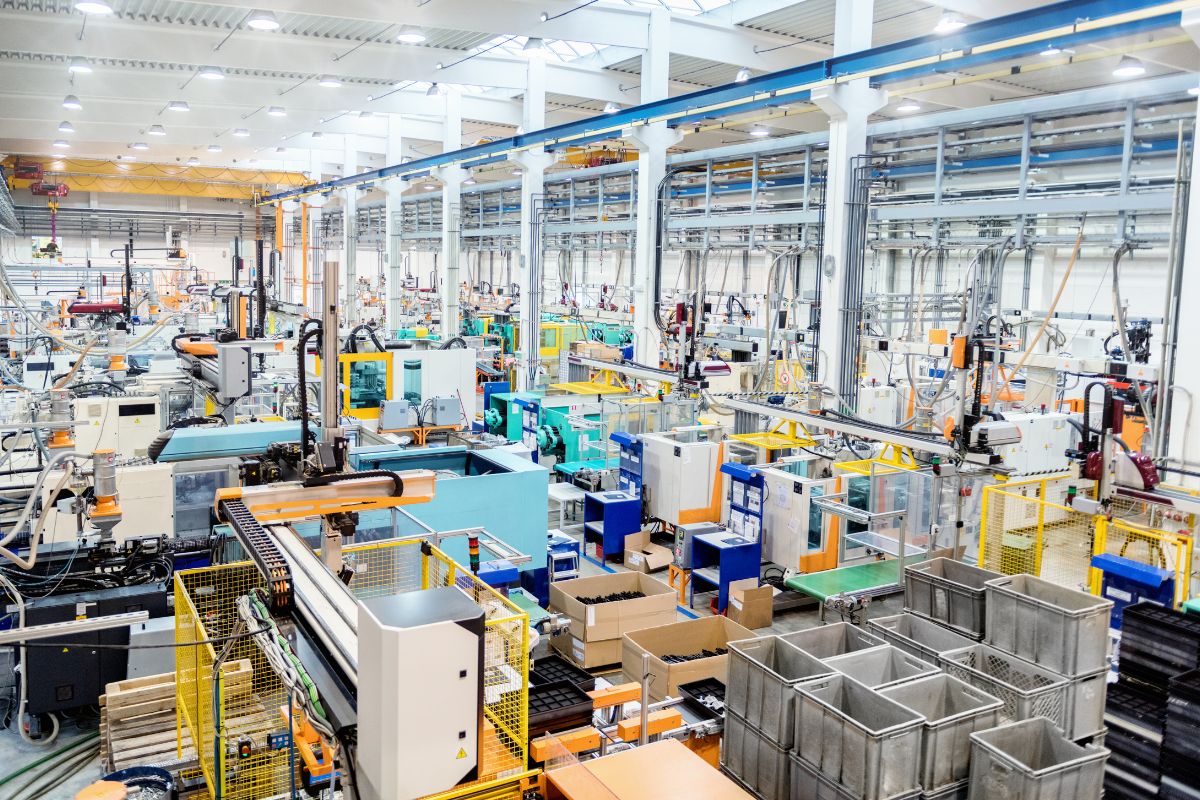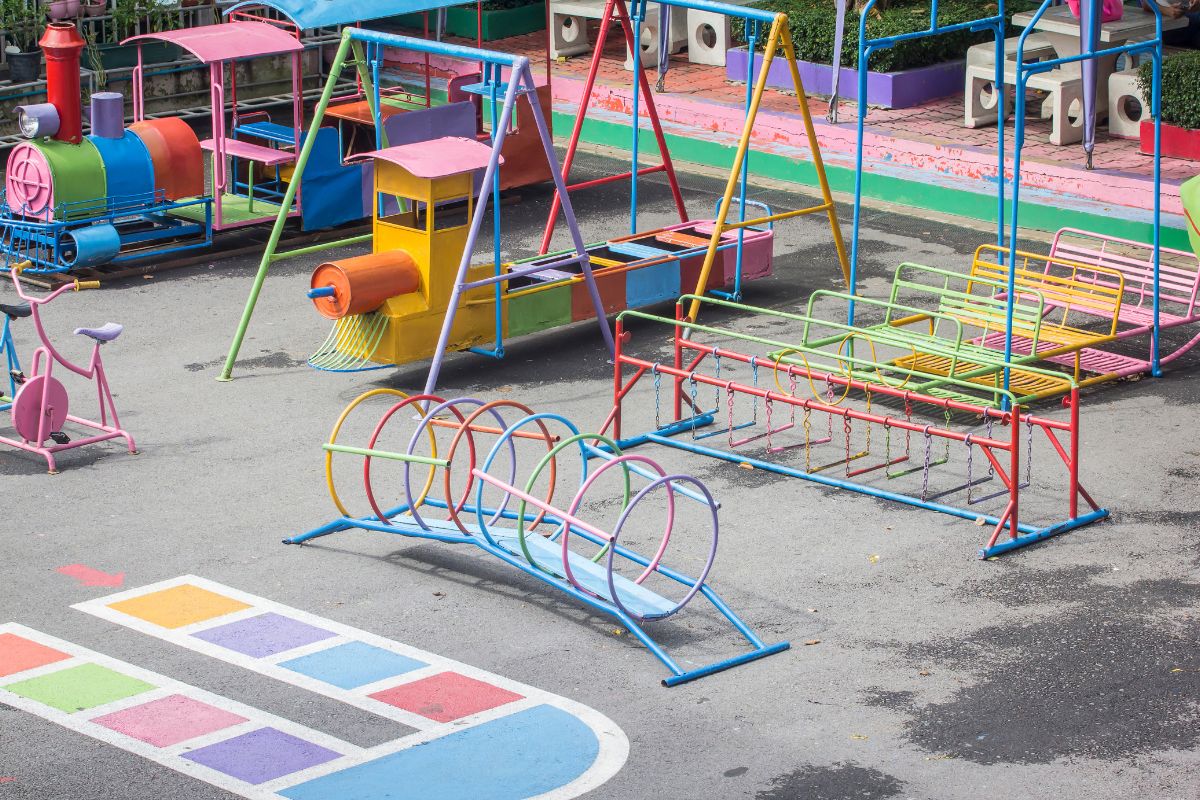Playgrounds are fundamental grounds where children learn to play and grow physically and socially, so playground equipment ought to be safe and fun to play on. Manufacturing playground equipment involves designing, material selection, a production process, and safety and durability testing of the finished products. This blog explains in detail the playground equipment manufacturing : it covers the main aspects, good practices, and standards within the industry.
Playground Equipment Manufacturing Process

Manufacturing playground equipment is a highly complicated process. The process initiates with understanding the needs of a child and the requirements of the playground. Here is an insight into the details involved in the manufacturing of playground equipment:
The Equipment for Playgrounds is that type of Product that Involves High-Level Design and Conceptualization
The designers sit with the engineers and think through the type of equipment that would be entertaining as well as would attract children’s attention to use it, complemented by being safe and last longer. At this stage, the designers sketch the designs on paper, create 3D models, and detail them by specifying the equipment on computer-aided design software.
The Selection of Materials for Playground Equipment Manufacturing is a key Consideration
The choice of material to be used is based on whether the material will be durable safe and resistant to various elements of weather. The used materials for making the equipment come in the forms of metal alloys, high-density polyethylene (HDPE), and treated woods. All materials are tested in terms of how they can withstand various elements of weather while at the same time ensuring their durability in performance.
Prototype Development
As manufacturers develop the design, they start to work on prototypes of the equipment that would test the functionality and safety of the equipment. These prototypes are subjected to several tests to ensure that the tool falls within the set safety standards and the specified design. This stage is important since it helps one identify the potential problems and solve them before going full throttle on the production of the tools.
Production
If the prototype testing is successful, then the production process follows. This means that playground equipment is manufactured massively with the aid of automatic machinery and specialized equipment for the process. The production processes include cutting, welding, molding, and assembly of the playground equipment. There are quality control measures throughout so that each piece of equipment meets high standards of safety and durability.
Testing and Quality Assurance
Playground equipment manufacturing is highly backed by comprehensive testing for quality as well as for conformance to safety considerations. Equipment has to pass various tests for the ability to hold a load, resistance from the impact—or a combination—including repeated loads, and stability.
Manufacturers adhere strictly to the guidelines of organizations like the Consumer Product Safety Commission and regulations forwarded by the American Society for Testing and Materials to be assured of the safety concerning the use of equipment.
Installation and maintenance
After manufacturing, play equipment will be delivered and installed at some sites. Correct installation works for the equipment as per design and also continues it be safe for child usage. Many manufacturers provide installation and maintenance guidelines to ensure long-term safety and performance.
Key Considerations in Playground Equipment Manufacturing

Safety Standards
Playground equipment manufacturing is carried out in line with the set standards of safety. There are regulations and guidelines put in place to protect a child from possible dangers. Some of the standards covered include the height of the equipment, spacing between them, and the use of materials that would absorb their impact in case of falls. The manufacturer should keep himself posted about changing standards so that his products meet the requirements necessary for safety.
Durability and Weather Resistance
You have seen that playground equipment is continuously exposed to the bad effects of different weather conditions, such as the sun, rain, and snow. Manufacturers therefore need to opt for materials that possess resistance against these agents, so they can show the durability of the equipment with surety. Proper finishing techniques such as powder coating and rust proofing will compliment equipment durability with better looks.
Inclusivity and Accessibility
Present-day manufacturing is very central to the making of inclusive and accessible playground equipment. Designers design equipment that reaches out to all children, including those with physical disabilities, so that the playground remains friendly and enjoyable for everyone.
Environmental Impact
Another major factor is the environmental impact of the entire process of playground equipment manufacturing. In this regard, manufacturers from all over the world emphasize the use of green materials and eco-friendly production methods. For example, such manufacturers take advantage of raw materials that have been recycled and apply eco-friendly coatings, hence minimizing the impact on the environment.
Meeting Innovation and Trends in Playground Equipment Manufacturing
With all the other upcoming entities in equipment manufacturing, some constant innovations and trends are followed in the playground industry. This has pressured the need to integrate technology in older forms of playground equipment, whereby manufacturers are including such inventions as interactive play elements and smart sensors that increase excitement in the play for a child. This trend enables manufacturers to produce the most current, desirable products that excite and engage children.
The challenge of Playground Equipment Manufacturing
Regulatory Compliance
Manufacturers need to handle the complex web of safety regulations and standards. Deep knowledge of these regulations is required, and they need to continuously monitor regulatory changes at local, national, and international levels to meet standards. Cost Management: Another balancing concern outlines the effort of finding compromises between material and production costs with the demand for qualitative and durable equipment. Finding cost-effective solutions will be quite challenging not compromising with the features of safety and performance.
Supply Chain Issues
Many playground equipment fabrication businesses utilize a somewhat complex supply chain for materials and components. A disruption in the supply chain can impact production schedules and costs. Supply chains must be managed effectively to provide on-time, efficient manufacturing.
Conclusion
The field of playground equipment manufacturing is highly dynamic and integrates creativity, engineering, and safety. If armed with knowledge regarding the process, key considerations, and best practices, you can be able to come up with a highly innovative, quality, proactive, safe, and interactive playground. From design to material selection and finally, to the last processes of production and installation, all are joined by playground equipment manufacturers in order to provide entertainment and developing areas for children.
With a deep sense of responsibility toward a new future for playgrounds and play experiences for children worldwide, manufacturers work ceaselessly for safety, durability, and innovation.




